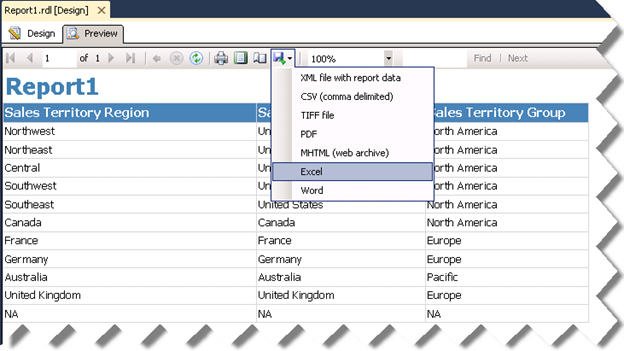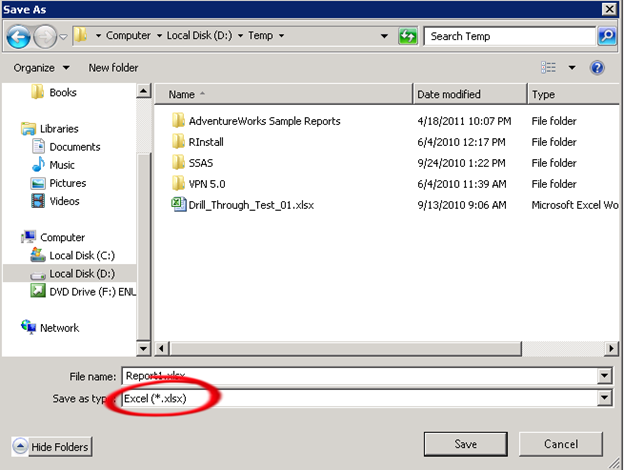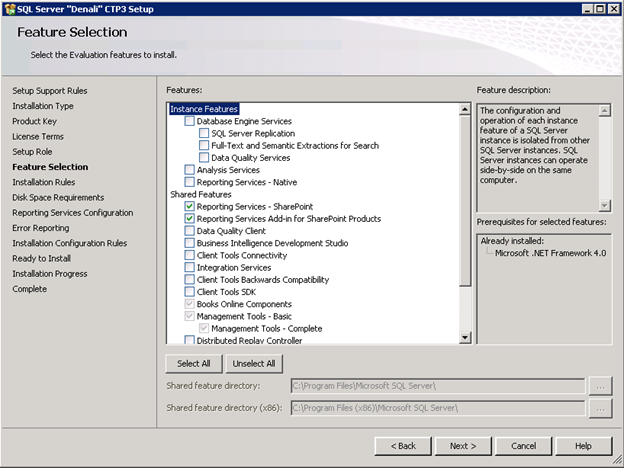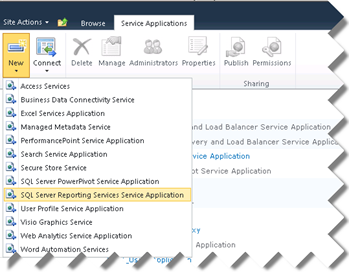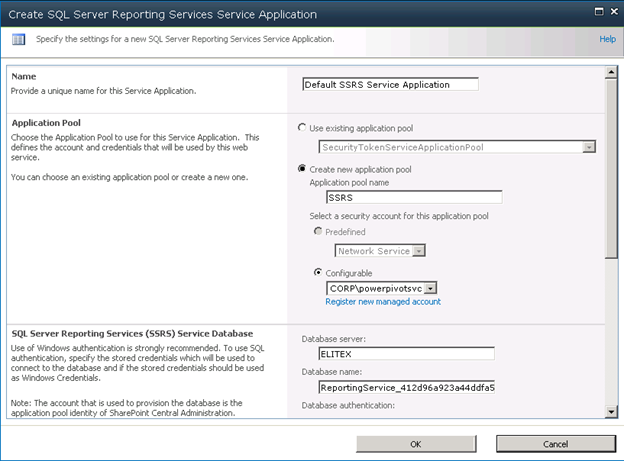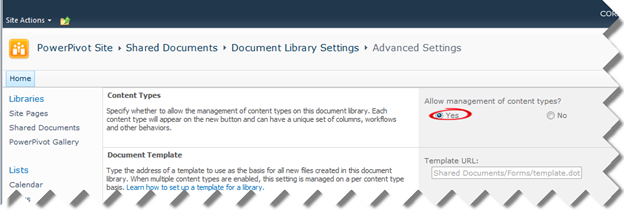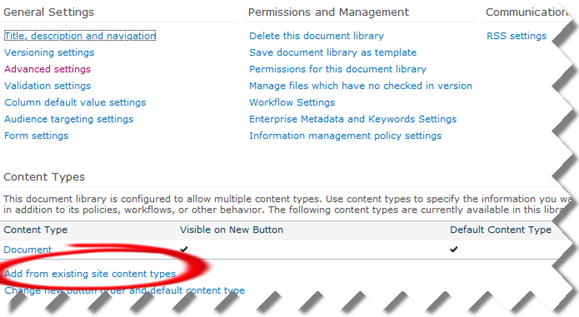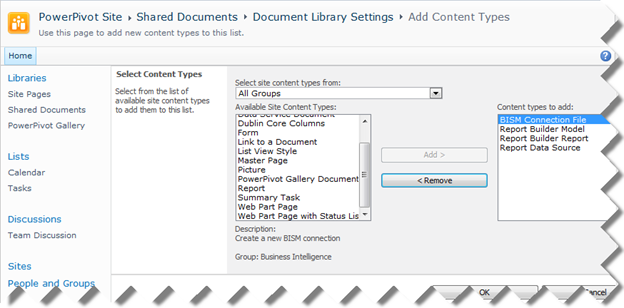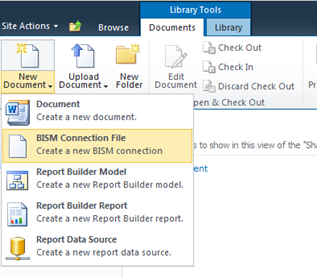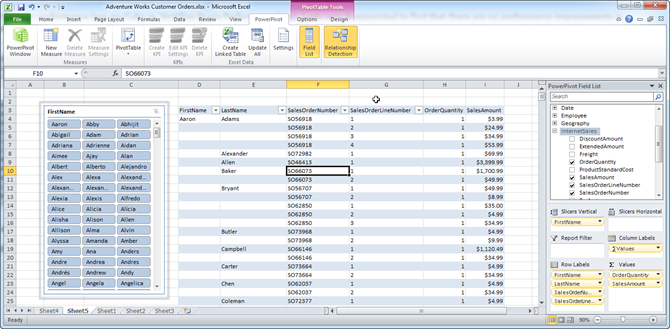CTP3 Issues with PowerPivot Management Dashboard
I ran into a couple of snags with the PowerPivot Management Dashboard and CTP3 of Denali. In this case, I’ve installed PowerPivot for SharePoint on a standalone domain controller.
- The Actions web part of the PowerPivot Management Dashboard refuses to load with the following exception logged in the SharePoint URL log ” Unable to acquire information about the NT group ‘Enterprise Admins'”
Resolution: This is a known issue that will be fixed in RTM. The workaround is to (1) delete any accounts that display their SIDs, i.e. they were part of a domain that is no longer valid, and (2) to delete any universal or enterprise groups
Connect item: https://connect.microsoft.com/SQLServer/feedback/details/685945/system-exception-unable-to-acquire-information-about-the-nt-group-enterprise-admins - The dashboard doesn’t display any data although usage data is collected. This is caused by the fact that the PowerPivot system account doesn’t have rights to the PowerPivot SQL database and the timer job fails. The SQL Profiler shows the following error “The SELECT permission was denied on the object ‘vHealth’, database ‘DefaultPowerPivotServiceApplicationDB’, schema ‘Usage’. An error occurred while processing the ‘Health’ table.”
Resolution: Grant the PowerPivot system account rights to all tables and views in the PowerPivot database
Connect item: https://connect.microsoft.com/SQLServer/feedback/details/685955/no-data-in-powerpivot-management-dashboard-due-to-insufficient-rights

